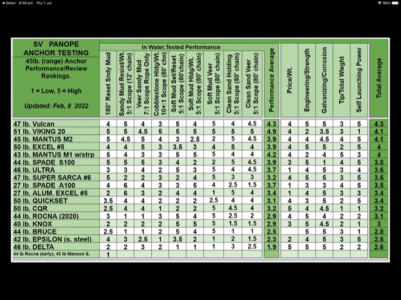Refueler
Well-Known Member
Years ago I proved this statement to be incorrect. I was able to drag my 65 metres of 8nmm chain along a dirt boatyard. I guess I might pull 50 kg, a tiny figure compared with what would be generated in a good blow.
As I said in my post #114 ..... yachts and ships anchoring are two different worlds .... yachts rely on anchor setting and the rode to maintain the pull angle.
BUT - various other factors do play in this ... that photo of my boat at Priory Bay - indicates that the boat swung round via an arc ... which means the chain would be in a curve and not being pulled in a straight line ... that increases the amount of pull needed. No doubt my boat touched bottom before chain was brought into a near straight line ...
I have a small 4kg anchor with Ankorlina tape reel ... it used to have a 3 or 4m short length of chain - which later was removed for ease of handling on the river for fishing. The difference when that chain was removed was immediately obvious ... as I fish in same locations repeatedly.
Here on deck next to my Holdfast Plough ...

With the chain - even my 4 ton boat (deck its on in photo) could use it as a 'lunch hook' or even short stay stern kedge. But without the short length of chain - its now used for smaller boats ..
For that boat I now use my old Fishermans ... yep - I still have one !! for stern kedge but not for bow anchoring - the plough does that ..

I am actually amazed at the holding that Fisherman has ... departing and lifting it shows how well its set !
My 38ft has a Bruce with short chain and Ankorlina tape reel in the transom locker ... obviously set up by previous owners for Baltic Moor (stern kedge use) .... I HATE IT ..... and I look at it sometimes and imagine how to sort it and make it more usable ! The reel has been bolted to the inner locker bulkhead instead of as most do - to the pushpit rail.
If I move it - then I have that ridiculous large Bruce to sort ..... UGH !!


